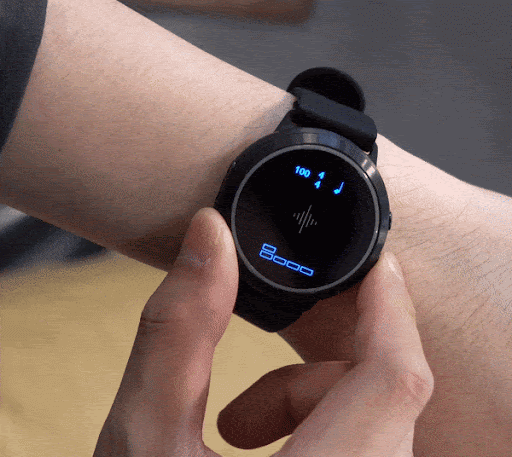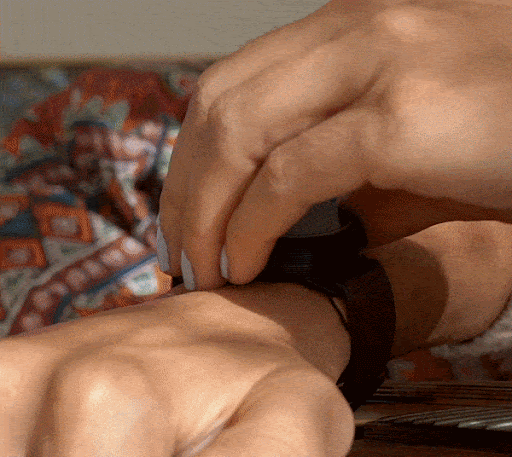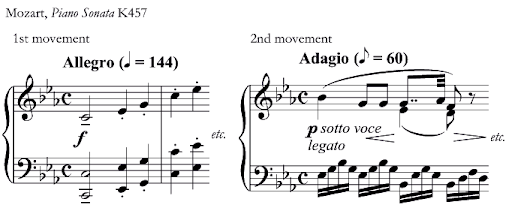
We sometimes get asked by musicians what’s the best way to practice with their Soundbrenner Core 2. In this article, we will give you step-by-step instructions on how to navigate your Core 2 to start practicing with it.
If you haven’t checked out one of our introductory videos just yet, we highly recommend doing so. Watch Soundbrenner instructor Nate Wong unbox a Core Steel. Core and Core Steel Unboxing
Warming up before practicing your music piece is important. Why? Because warming up reinforces your muscle memories, which makes your fingers or vocal cords more comfortable when you start to play. Also, this helps to prevent injuries, especially before an intensive practice session.
You can easily find warm-up exercises online to trigger your muscle memory. Practice melodic patterns or changes, long and short phrases, and fast and slow tempos.
Here is an example:
To warm up, you can start playing the scales with different tempos: 80 BPM, 90 BPM, 100 BPM, 110 BPM, 120 BPM. Here is how you can set this up with the Core 2:

Layer your warm-up by playing your scales in legato and staccato. Legato is a fluid, continuous sound between notes, while staccato is performed with each note sharply detached or separated from the others. Legato and staccato might sound different for each instrument because of timbre, the tunings, and the range, there are techniques that you can follow. Here is a perfect differentiation between the two sounds with the piano.
If you play a string instrument, make sure it is tuned with the Core 2’s handy contact tuner feature! Simply twist the Core 2 off its rig, snap it onto your instrument, and start tuning. How convenient!

Charting your improvement is important. If you cannot do your G major scale in 120 BPM, it’s alright to just keep practicing at a slower BPM, and eventually, you’ll be able to play your scale or riffs at 120 BPM.
When learning a new piece, we sometimes disregard the tempo and the time signature, but it is these components that set the vital organizational direction and mood of the song. You can check out this video by David Bennett Piano giving real examples of how a change in tempo affects a song. A stable tempo and accents in the right place play a huge role in creating the shape and backbone of the song.

Although most pieces would have BPM at the very top of the piece. Depending on your preference, you can either bring it up or bring it down a couple of BPM to what sounds smooth and right for you.
Once you find the tempo that you would like to achieve, say 136 BPM, you can start practicing by halving that BPM to make sure that you are hitting the right notes with the right technique.
Start playing at 68 BPM which is half of 136, and then build it up to 102 BPM which is ¾ the speed, and then finally 136 BPM. This slowly allows you to understand the finger techniques and challenge your muscle memory.
With Soundbrenner Core 2, you can easily change the tempo by turning the wheel. Also, you can set accents to help indicate when you should place more emphasis on notes.
If you are practicing a song that is usually played with a band you can find a drum loop online with the tempo you are practicing with and tap in the beat to your watch as you start playing the drum loop.
If you are practicing with your band and they also own a Soundbrenner Pulse or Core 2 device, you can easily sync up all your devices to practice together! Here’s how. If you are a music producer, you could even sync your Soundbrenner wearable to a DAW to control it from there.
Here are just some of our tips on practicing with your Soundbrenner Core 2. We hope this makes your practice experience a lot more effective and enjoyable.
Got a question about Soundbrenner wearables? Reach out to us at [email protected], we’re happy to help!